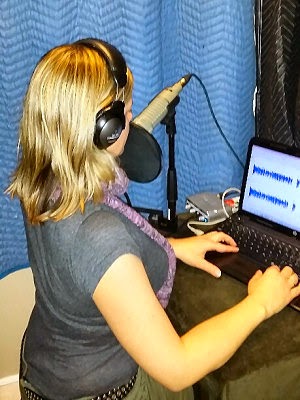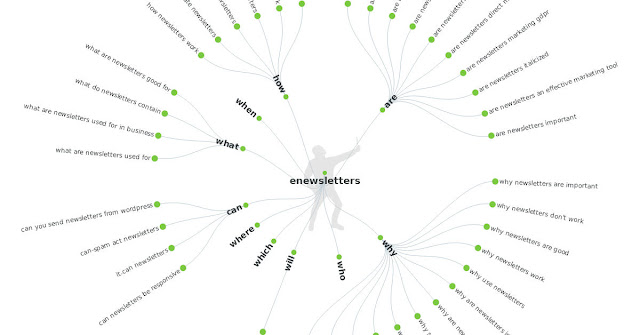Commit to Consistency
Every single month since June 2011, Peter Chapman of GPS Business Solutions has been sending out an informational newsletter. It’s a shining example of commitment and consistency. I asked Peter recently to share his insights, tips and successes.
Peter is a consultant focused on increasing the sales of producers, manufacturers and retailers in the food industry. Because he’s an expert, he’s also in demand as a speaker on these topics. Now, unless you work in the food industry, you may not be interested in what Peter has to say. It’s very specific... and very valuable to folks in his target market.
One key to Peter’s success is advance planning. He told me, “I have a spreadsheet with my ideas for each section of the newsletter and I try to plan at least 4 months out. It makes it much better for me to know I just need to write it, as opposed to coming up with the ideas and then writing it. I also find there is better continuity. If you start from scratch every month there is not the same flow. I like to pick themes and use that for the main article. When I start on a theme, I will do the plan for all of these. For example, right now I am working on a summary of each of the retailers operating in the Canadian food landscape. This will be at least 8-10 month’s worth of content.”
When I asked Peter where he gets ideas for content, he said, “I get ideas from clients, walking the stores, and just trying to think about what my customers need to know. People want it short and quick, so sometimes one idea can work for 3 month’s worth of content.”
Peter told me that the biggest benefit from his newsletter is that it positions him as an expert and gets him in front of potential clients every month. “They see value in it and I have their permission to send them something 12 times per year,” Peter said. He gets calls when his newsletter goes out because it reminds people of him and what he does. He also told me that another benefit of doing a newsletter is that it forces him to stay current. “I have to be on top of what is happening to write about it,” he said. Would you believe Peter gets all those benefits from spending one hour writing and less than $200 per month?
I asked Peter what advice he has for anyone considering starting a newsletter. “The biggest thing is to have content that is of value to your potential clients.” Here is some more advice he offered:
Peter is a consultant focused on increasing the sales of producers, manufacturers and retailers in the food industry. Because he’s an expert, he’s also in demand as a speaker on these topics. Now, unless you work in the food industry, you may not be interested in what Peter has to say. It’s very specific... and very valuable to folks in his target market.
One key to Peter’s success is advance planning. He told me, “I have a spreadsheet with my ideas for each section of the newsletter and I try to plan at least 4 months out. It makes it much better for me to know I just need to write it, as opposed to coming up with the ideas and then writing it. I also find there is better continuity. If you start from scratch every month there is not the same flow. I like to pick themes and use that for the main article. When I start on a theme, I will do the plan for all of these. For example, right now I am working on a summary of each of the retailers operating in the Canadian food landscape. This will be at least 8-10 month’s worth of content.”
When I asked Peter where he gets ideas for content, he said, “I get ideas from clients, walking the stores, and just trying to think about what my customers need to know. People want it short and quick, so sometimes one idea can work for 3 month’s worth of content.”
Peter told me that the biggest benefit from his newsletter is that it positions him as an expert and gets him in front of potential clients every month. “They see value in it and I have their permission to send them something 12 times per year,” Peter said. He gets calls when his newsletter goes out because it reminds people of him and what he does. He also told me that another benefit of doing a newsletter is that it forces him to stay current. “I have to be on top of what is happening to write about it,” he said. Would you believe Peter gets all those benefits from spending one hour writing and less than $200 per month?
I asked Peter what advice he has for anyone considering starting a newsletter. “The biggest thing is to have content that is of value to your potential clients.” Here is some more advice he offered:
- Planning is key. Having the topics planned ahead ensures that it is not a big mountain to climb every month.
- Do not give away too much each month – readers want it short and quick.
- Stay current. We live in a world that is changing fast so make sure your newsletter is relevant.
- Use a consistent format to keep yourself on track. Peter uses a format of one main article and three small sections. He says, “The format keeps me on track and allows me to throw in items that are important at the time.”
- Build your list with people who might want to hire you. “Doing the work each month for people who will not open it or ever call you is waste of time and just gets frustrating,” Peter said. “And if you’re a speaker, offer the newsletter to bureaus and other people who hire speakers. It never hurts to get in front of them every month, too!”
- Analyze the results. You can tell from the response if the content, your format, and the overall concept are successful. Be objective.











Comments
Post a Comment